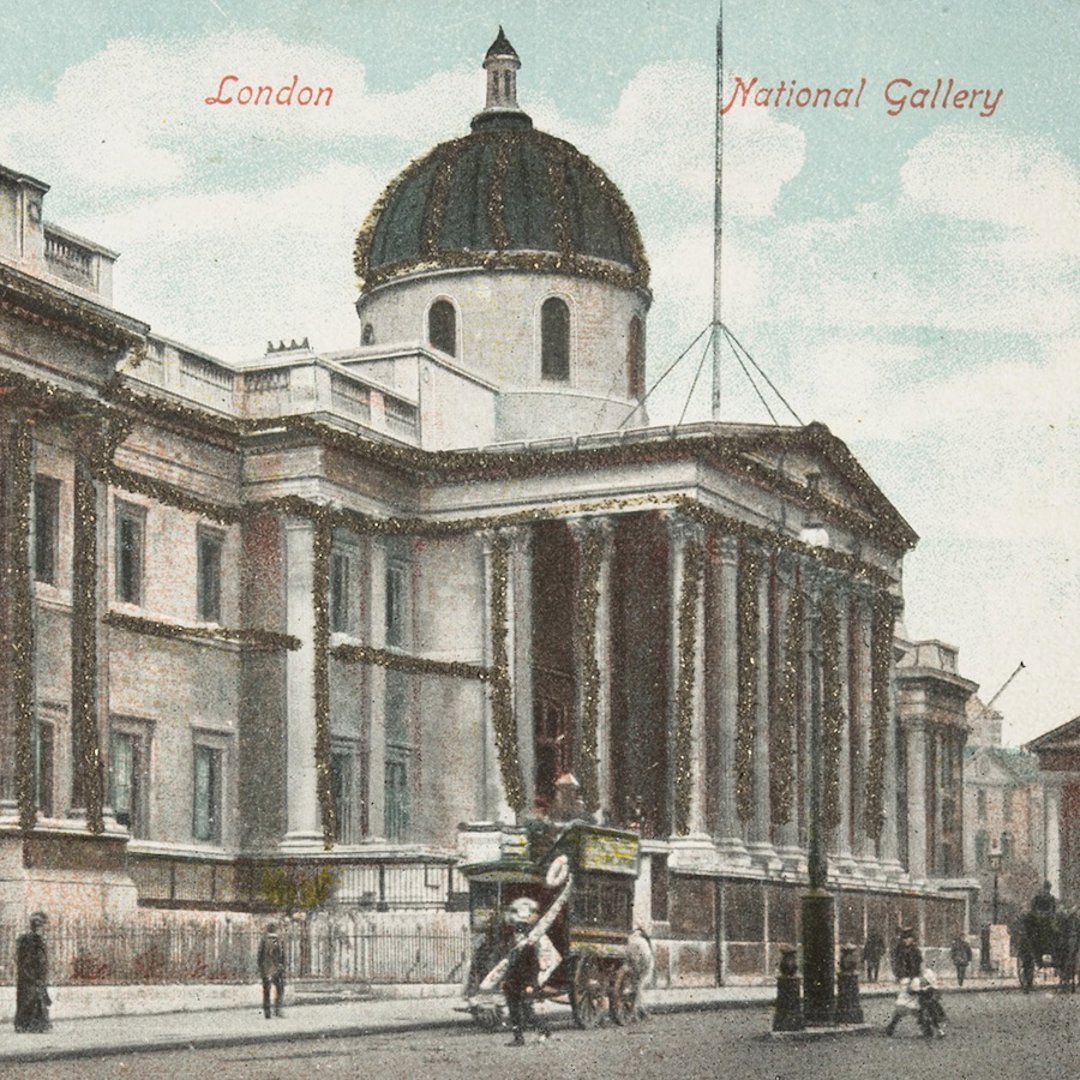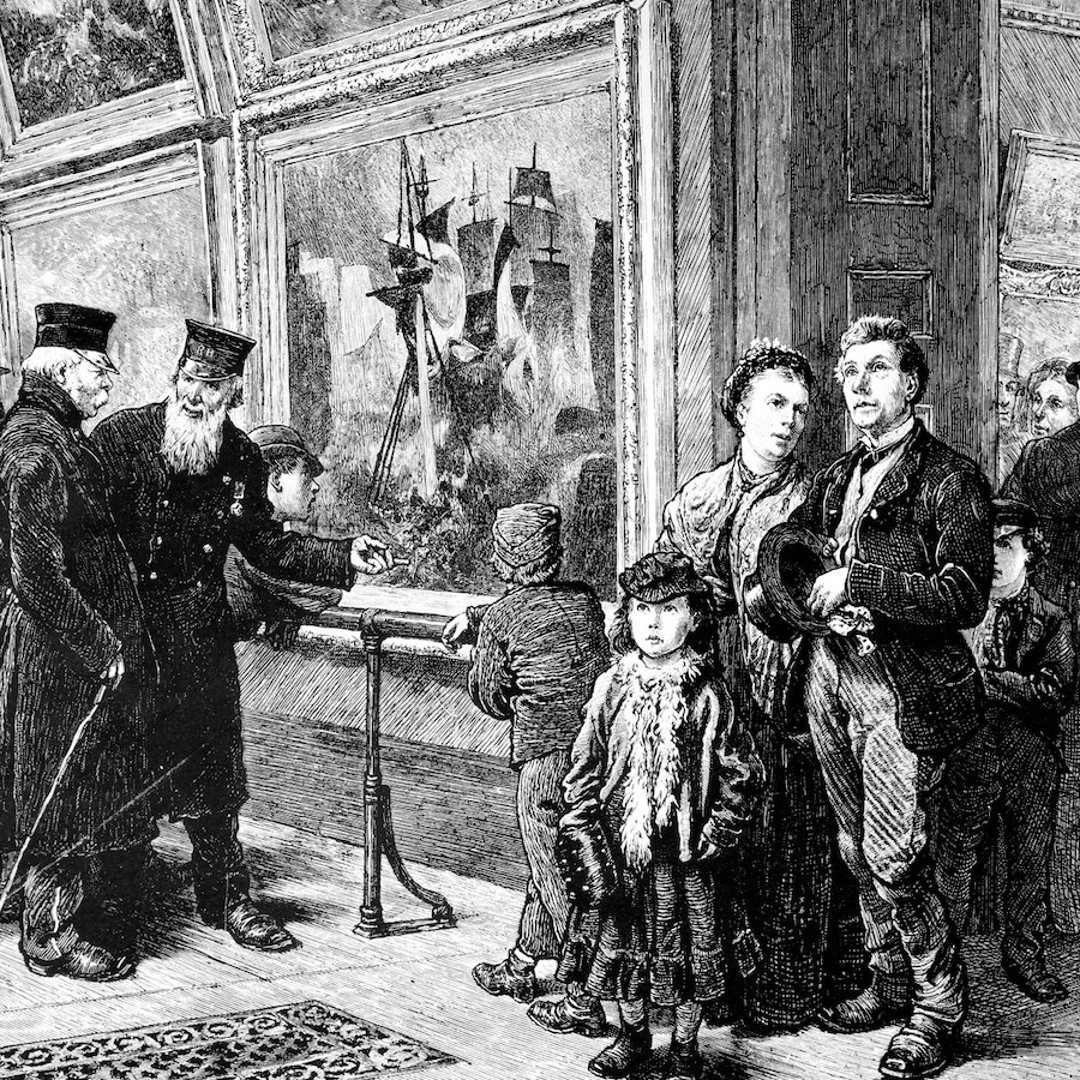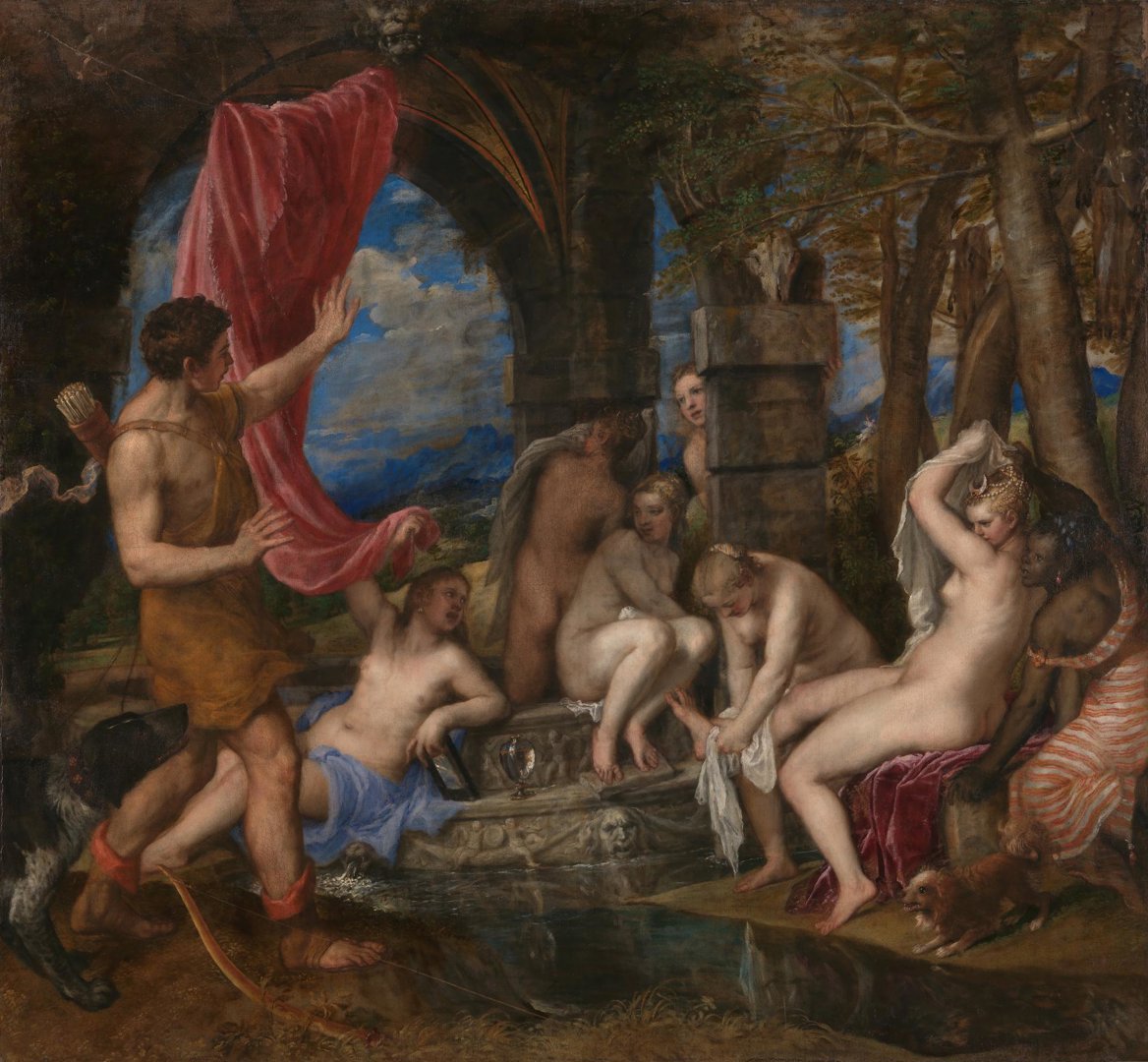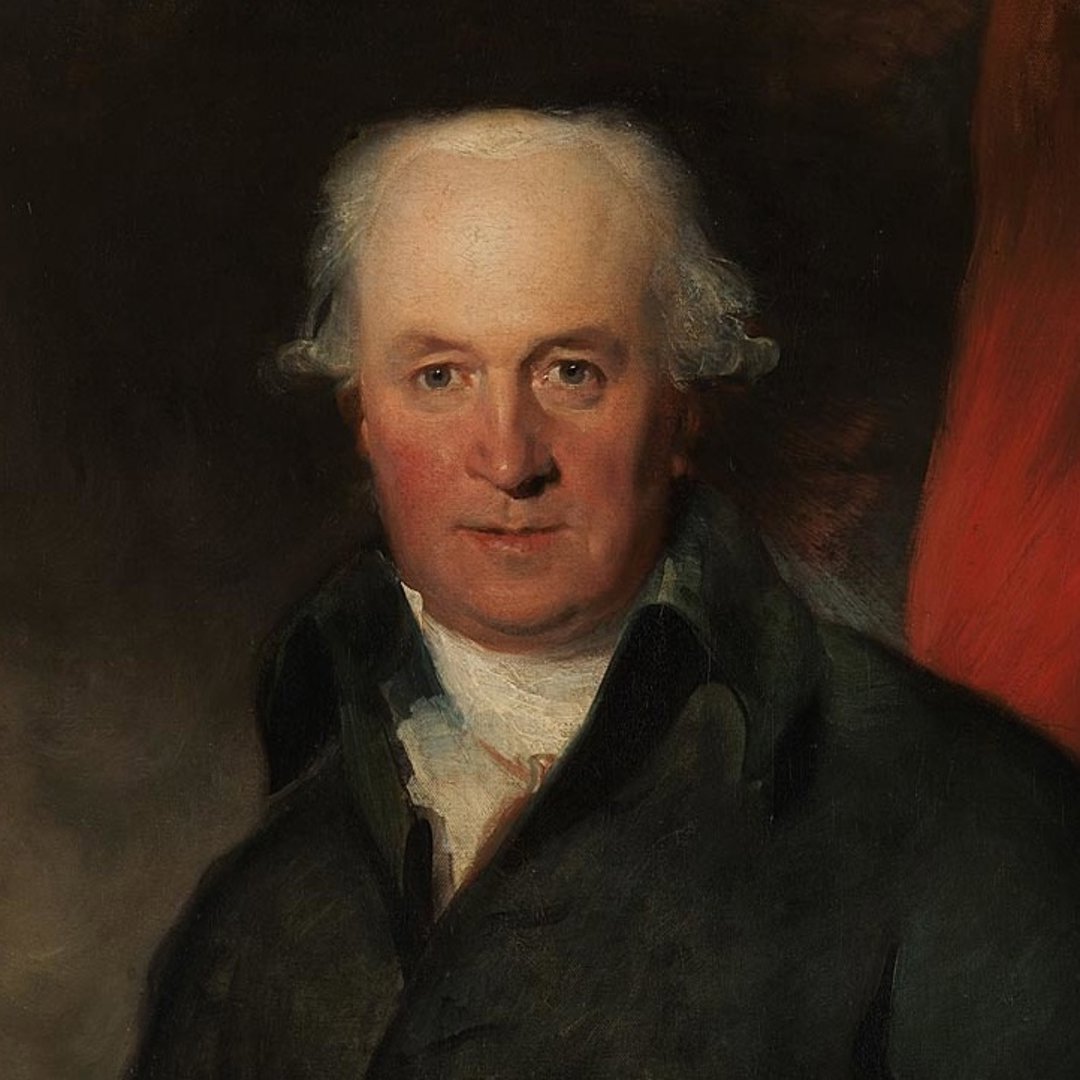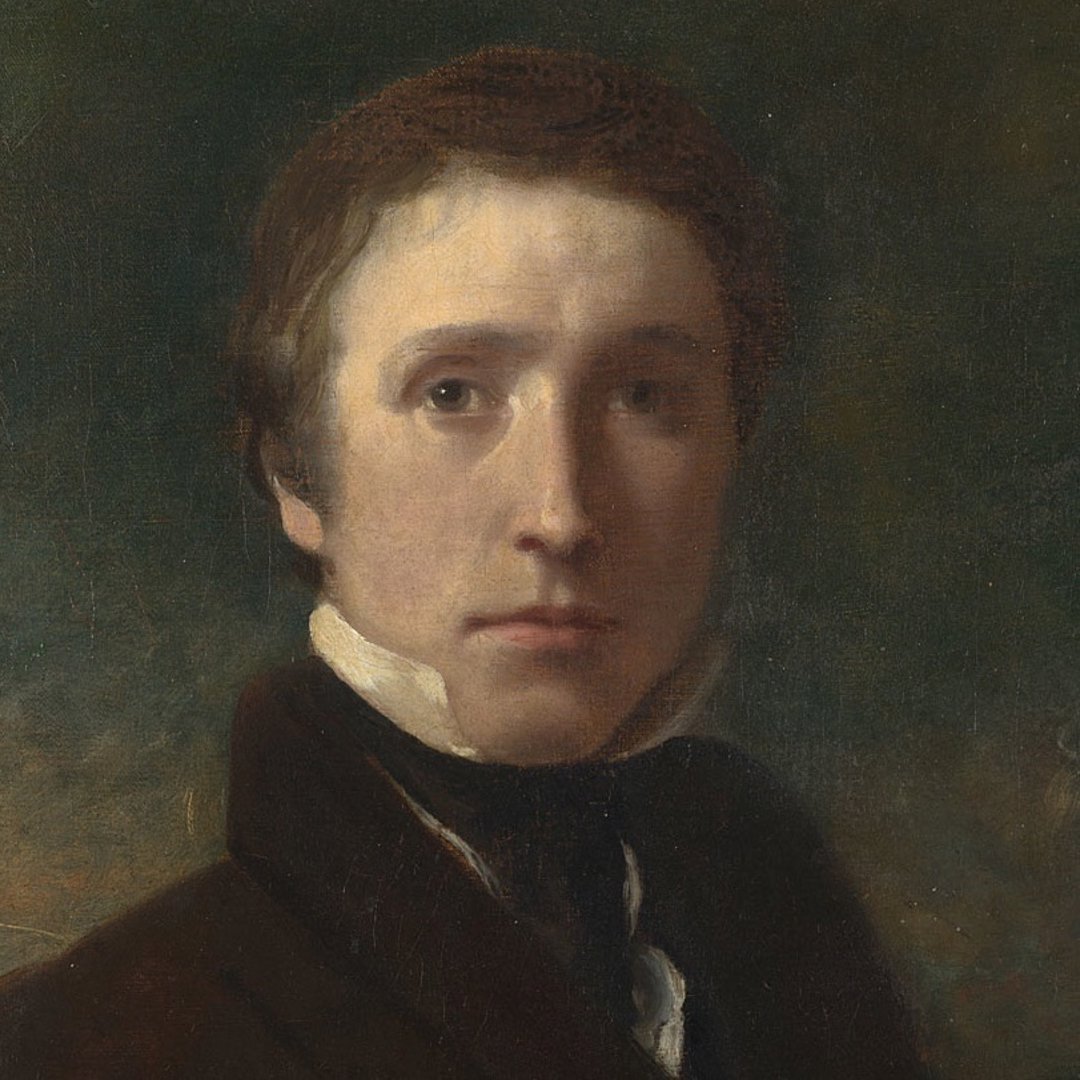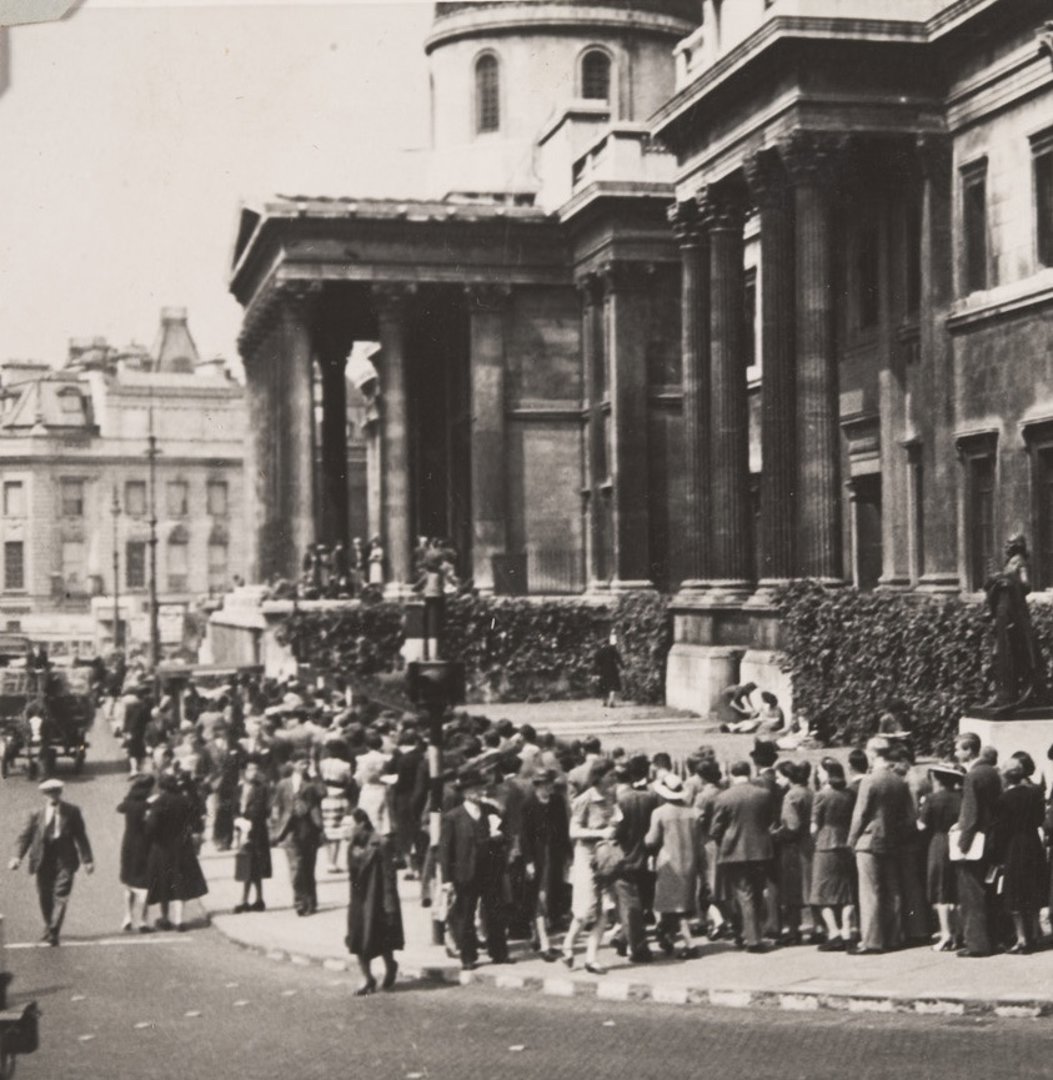
History of the collection
Building the nation’s collection, from the first paintings to the present day
When the Gallery was founded in 1824, the first 38 paintings came from the private art collection of the banker John Julius Angerstein.
Our world-class collection of paintings has grown considerably over the last two centuries. Today, we have over 2,300 works, spanning the major traditions of Western European painting.
Building a Gallery for all
Why was Trafalgar Square chosen for our location, and how has the building changed through the centuries?
The National Gallery found its beginnings in Angerstein’s London townhouse at 100 Pall Mall. It soon became apparent that the paintings would need to be moved to a more substantial location and it was agreed that a new building should be constructed for the national collection. The completed building at Trafalgar Square, designed by the architect William Wilkins, opened as the new home of the National Gallery in 1838.
Since this time, numerous alterations and extensions have been made to the original building at Trafalgar Square, creating exciting new spaces.
How three aristocrats revolutionised art collecting in the UK
Who were the 'Bridgewater Syndicate?'
In 1798, the Duke of Bridgewater, his nephew Lord Gower and the Earl of Carlisle (known collectively as the Bridgewater Syndicate) bought the French and Italian works from the renowned collection of the Duke of Orléans. While the syndicate retained many of the paintings for themselves, including Titian’s 'Diana and Actaeon', they also exhibited Old Master works from the Orléans Collection in a series of public displays.
These pioneering displays encouraged public appreciation for Old Master paintings and helped to revolutionise the collection and exhibition of art in Britain. The influence of the Bridgewater Syndicate can also be seen as having led to the establishment of the first public art galleries in the UK.
Collectors and benefactors
How have collectors and benefactors helped to shape and develop the collection?
From the foundation of the National Gallery to the present day, collectors and benefactors have played a key role in the development of the national collection.
Whether through the gift of a single painting, a bequest of an entire collection or a major financial donation, the generosity of benefactors has helped to enhance the experience of the Gallery for all its visitors.
Directors from past to present
From our first Director in 1855, to today
The position of Director was established 31 years after the founding of the Gallery. Before this time, the collection had been managed by the Gallery’s Keeper of paintings and a small committee which later came to be known as the Board of Trustees.
Sir Charles Lock Eastlake became the National Gallery’s first director in 1855. Since the formation of the role, 15 Directors and 3 acting Directors have been appointed to care for and enhance the national collection. Our current Director is Dr Gabriele Finaldi.
The Gallery in Wartime
How the Gallery survived the Second World War
Faced with the threat of war in 1939, the Gallery's paintings were evacuated from Trafalgar Square. Paintings were initially scattered between temporary storage sites, but for much of the war, the collection was housed in the underground caverns at Manod Quarry in Wales.
At Trafalgar Square, the opportunity was seized to open the National Gallery for various cultural pursuits which might raise public morale. Visitors were able to attend temporary wartime exhibitions as well as the groundbreaking lunchtime concerts pioneered by Myra Hess.

